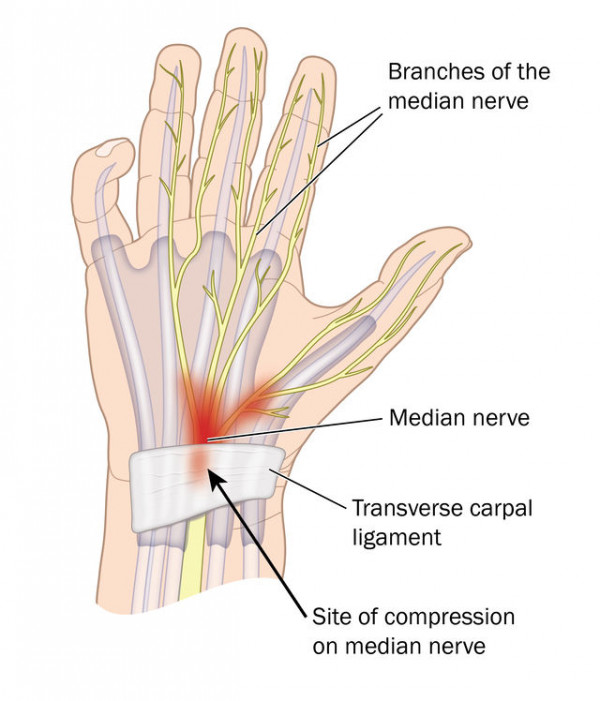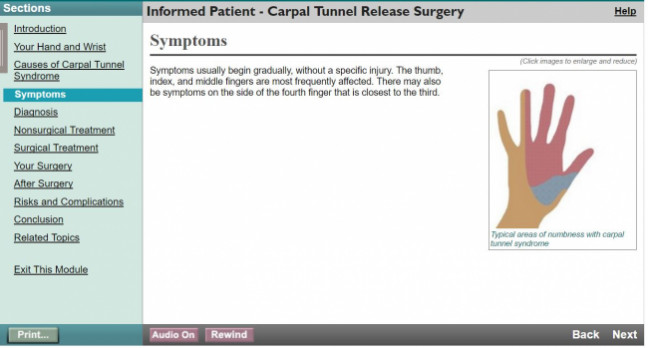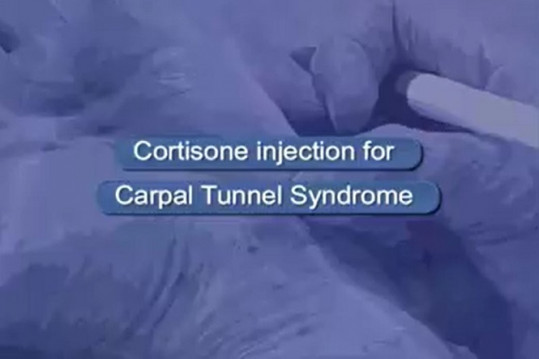Treatment for carpal tunnel syndrome depends on how bad your symptoms are and how long you have had them. Treatment will also depend on whether you have other conditions that need further treatment such as arthritis, diabetes or another injury. The aim of treatment is to reduce the pressure in the carpal tunnel space. Some people find that symptoms improve within a few weeks.
Self-care
Self-care is the first option, particularly if your symptoms are mild or have started during pregnancy. You may be able to ease your discomfort by:
- taking frequent breaks from repeated activities to rest your hands
- changing your wrist position
- avoiding activities or movements that make symptoms worse
- avoiding prolonged, repetitive or strong gripping of objects
- avoiding extreme bending of your wrist
- avoiding gripping equipment or tools that are narrow and slippery as they require more force to hold onto - it may help to get wider and less slippery equipment or tools
- applying cold packs to reduce any swelling
- using a removable support (splint) to keep your wrist straight. You can use it during the night or the day, depending on when your symptoms are worst. Splints can often be bought over the counter from a pharmacy.
Note: Squeezing a ball is not helpful for this condition.
Other treatment
If self-care does not relieve your symptoms within a few weeks, or you notice a reduction in the size of the muscles at the base of your thumb, talk to your doctor or physiotherapist. If you leave the condition untreated while your symptoms get worse, permanent nerve and muscle damage can occur. There are a range of treatments available.
- Physiotherapy or hand therapy may be helpful. It can improve the mobility of your wrist bones and the flexibility of soft tissues in your arm. You may also be given strengthening exercises.
- Physiotherapists can also provide strategies and solutions for activities at work, such as when using a keyboard.
- Pain medication such as paracetamol may provide relief.
- Your doctor may offer cortisone injections, which can also provide short-term relief.
It is also important to manage any underlying causes, such as diabetes. Losing weight, if you are overweight or obese, is likely to reduce the symptoms.
Treatment for severe symptoms
If symptoms persist for more than 6 months and are interfering with your daily life and work activities, despite self-care and treatment, you may need surgery. Surgery relieves pressure on the trapped nerve and aims to prevent any permanent nerve damage. Your doctor will be able to discuss the most suitable method of surgery with you.









